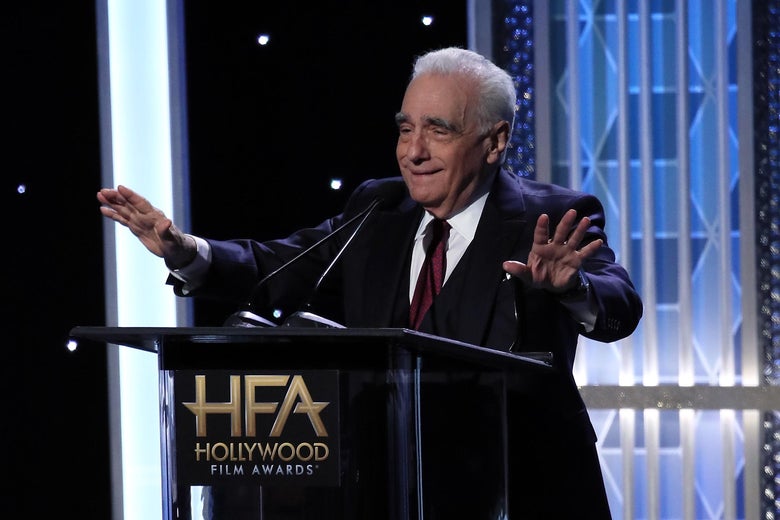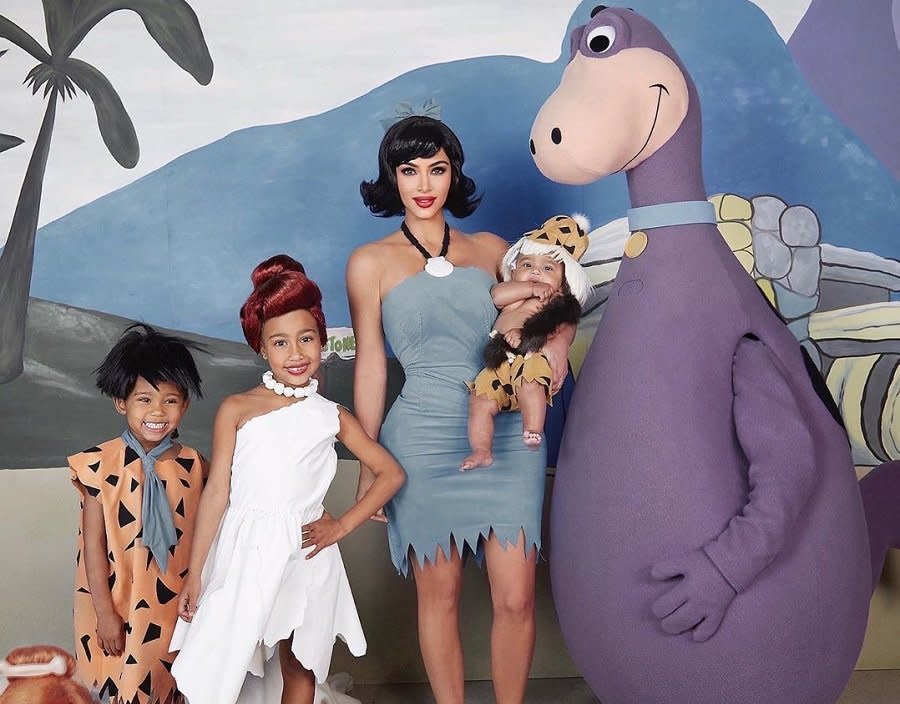
When it comes to the discourse around The Irishman, the exhausting and seemingly never-ending debate surrounding Martin Scorsese and Marvel has distracted us from the things that really matter about this film: Al Pacino’s working with Scorsese for (somehow) the first time in his career; the great Joe Pesci’s coming out of retirement; and, of course, the movie’s highly publicized, highly expensive foray into de-aging VFX. Because The Irishman spans decades, following hitman Frank Sheeran from his service in World War II to his time with the mob and Jimmy Hoffa in the subsequent decades—the film’s framing device is an older Sheeran reminiscing about his life from a retirement home—and because the film’s leading actors are in their 70s, having capable de-aging tech was an essential component of the project. (Sure, Scorsese could’ve used young actors or something, but seeing living legends like Robert De Niro, Pacino, and Pesci share the screen again is a huge part of the movie’s appeal.)
But The Irishman’s de-aging VFX also ran the risk of being the film’s biggest problem. Since so much of the movie takes place in the past with “younger” versions of the characters, unconvincing de-aging technology could be a huge distraction from the actual storytelling. The film’s trailers and production stills didn’t inspire much confidence; World War II–era De Niro looked like he came straight from a mid-2000s video game and was gloriously memed into oblivion.
Where The Irishman’s de-aging landed on the spectrum from Samuel L. Jackson’s surprisingly convincing Young Nick Fury in Captain Marvel to the hauntingly soulless expressions of Evil Jeff Bridges in Tron: Legacy was always going to be important for the film. With de-aging effects already being used to varying degrees in Gemini Man, Terminator: Dark Fate, Captain Marvel, and It: Chapter 2, 2019 has been a watershed year for using the technology onscreen. (Most of the effects have been surprisingly fine—or at the very least, doesn’t distract from the viewing experience.)
On the whole, The Irishman’s de-aging isn’t exactly flawless, but it manages not to ruin an otherwise-great Martin Scorsese film. Though, having seen the movie in a theater, I’m curious whether audiences will find the effects better or worse watching it at home—this is how most people will see the film—where it’ll be available on Netflix beginning November 27. Having spent more than three hours with my De-aged Italian/Irish Sons, these are the biggest pros and cons you should take into consideration before seeing The Irishman for yourself.
Pro: It’s Way Better Than Most De-Aging Efforts
While The Irishman was something Scorsese had hoped to make for years, the director wanted to be sure the de-aging tech was up to the task first. In 2015, he tested the aptitude of de-aging visual effects by having De Niro re-create a scene from Goodfellas; it was good enough that The Irishman went into production two years later. Four years isn’t a long time, but when it comes to using visual effects to de-age and/or re-create someone’s likeness—remember the bizarre and ethically dubious use of CGI Peter Cushing from Rogue One in 2016?—it might as well be a lifetime.
Pacino and Pesci’s de-aging stand out as the most effective in the film—for the former, it especially helps that Jimmy Hoffa was in his 60s by the time he mysteriously disappeared. As for Pesci, if we were all willing to accept that he was playing someone in his late 20s in Goodfellas—Pesci was 46 at the time and won a much-deserved Oscar for the performance—I think we can handle 76-year-old Pesci playing someone decades younger yet again.
Con: The De-Aging Effect Is Still Uncanny and Takes Time to Get Used To
Where The Irishman’s de-aging occasionally stumbles is, unfortunately, with its lead. De Niro, as Sheeran, looks nowhere near as bad as the trailers and production stills would make him out to be, but there’s a certain sheen to De Niro’s de-aged face. (The brief World War II moments were, predictably, the worst of the bunch; de-aged De Niro did not look anything like a person in his 20s.) Not helping matters is the fact that De Niro gives a rather subdued performance. Sheeran spends good portions of the film being a quiet observer to mob/union chaos, and De Niro’s de-aged face looks weirder when it isn’t moving as much.
But perhaps worst of all, Pesci’s mob boss Russell Bufalino repeatedly refers to Sheeran as “kid,” a statement so off-putting it’s genuinely distracting the first couple of times it happened. Pesci and De Niro are the same age in real life, and that extended to the de-aging effects for both of their characters. There’s never a point when you’re convinced that Pesci is playing someone who’s Sheeran’s senior, or that anyone who isn’t an old man in a wheelchair should be calling De Niro “kid.”
Pro: It Lets the Best Actors on the Planet Cook
The effectiveness of The Irishman’s VFX could set a strange precedent, where older, popular actors become de-aged for younger roles. (Upon getting a de-aged makeover, De Niro reportedly told effects supervisor Pablo Helman: “You just gave me 30 more years of my career.”) On the one hand, the development of de-aging VFX would allow a veteran actor to expand their range—Will Smith did a great job tweaking his affects to play a “younger” him in Gemini Man—but it might come at the expense of opportunities for younger actors who could play the part themselves. Like, imagine if this technology existed when The Godfather: Part II came out—it would be dope to see what a de-aged Marlon Brando would have been able to do, but playing a younger Vito Corleone remains one of the most iconic and celebrated performances of De Niro’s superlative career.
And yet The Irishman feels like a special exception—if only because of what the project signifies. De Niro, Pacino, and Pesci are practically synonymous with gangster epics; Scorsese’s getting the gang back together for [Dominic Torretto voice] one last ride is a thrilling, momentous event. When the de-aging technology allows you to let some of the best actors on the planet cook, you might as well let them while we can still appreciate their talents.
Con: The Actors’ Performances Are Occasionally Hindered
It’s one thing to have an actor’s face and body convincingly de-aged; it’s another to feel convinced someone is moving around like a younger person. That’s an occasional issue in The Irishman that Scorsese had to deal with (and that you will probably notice it a little for yourself). The filmmaker told Sight & Sound magazine that they had to digitally alter De Niro’s mouth so that he could “convey a kind of vulnerability and a haplessness.” According to Scorsese, the actor couldn’t pull the look off without seeming “threatening.” (Although, LOL, when, at any age, has Robert De Niro not looked intimidating?)
They also needed to reshoot a scene of Pacino-as-Hoffa getting out of his chair because, essentially, it didn’t look like he was getting up “like a 49-year-old.” (Scorsese joked they got Pacino down to a “62” on the second take, which is the biggest burn the actor’s suffered since the release of Jack and Jill.) No amount of technological advancements in de-aging can replace someone moving and feeling like they’re younger; extended de-aged performances that require some level of physicality will always look slightly off. When Sheeran assaults a grocery store clerk who hit his young daughter, I never got the impression he was throwing around his weight like a young man—but at the same time, I didn’t really mind since it’s still really compelling to watch an angry Robert De Niro curb-stomp someone’s hand. (If Rotten Tomatoes tries to label this as an Irishman review, please use the above sentence as a pull quote.)
The good of The Irishman’s de-aging VFX more than outweighs the bad, and while Hollywood probably won’t rush to incorporate the tech in every movie starting tomorrow, it still represents a major turning point. Ang Lee used high-frame-rate filmmaking in Gemini Man, and believes that the innovation will be the future of cinema. The future of filmmaking may indeed lie in a creative decision from Gemini Man, but not in the way Lee thought.
https://www.theringer.com/movies/2019/11/5/20948617/the-irishman-aging-tech-martin-scorcese-robert-de-niro
2019-11-05 10:40:00Z
CBMiamh0dHBzOi8vd3d3LnRoZXJpbmdlci5jb20vbW92aWVzLzIwMTkvMTEvNS8yMDk0ODYxNy90aGUtaXJpc2htYW4tYWdpbmctdGVjaC1tYXJ0aW4tc2NvcmNlc2Utcm9iZXJ0LWRlLW5pcm_SAXdodHRwczovL3d3dy50aGVyaW5nZXIuY29tL3BsYXRmb3JtL2FtcC9tb3ZpZXMvMjAxOS8xMS81LzIwOTQ4NjE3L3RoZS1pcmlzaG1hbi1hZ2luZy10ZWNoLW1hcnRpbi1zY29yY2VzZS1yb2JlcnQtZGUtbmlybw






